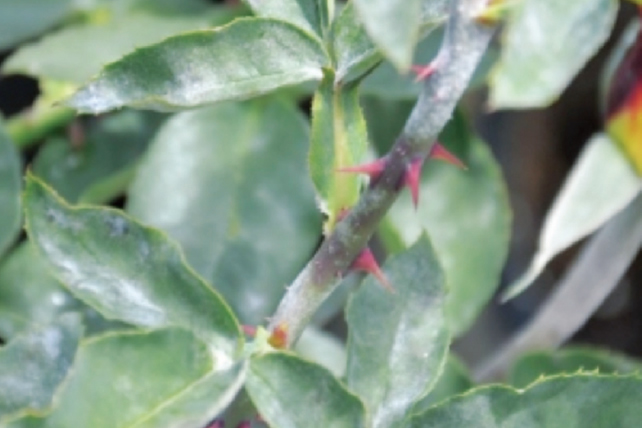 Powdery Mildew BluesThe farmers’ constant nuisance Powdery mildew has since time immemorial wrecked havoc to the farmers and still with the modern science continues to be an headache among farming communities, dare ask a Rose grower, cucumber, mango, strawberry to name but a few, which disease consumes their time, labor and resources more, surely he/she will not forget powdery mildew.
Powdery Mildew BluesThe farmers’ constant nuisance Powdery mildew has since time immemorial wrecked havoc to the farmers and still with the modern science continues to be an headache among farming communities, dare ask a Rose grower, cucumber, mango, strawberry to name but a few, which disease consumes their time, labor and resources more, surely he/she will not forget powdery mildew.
Description
Powdery mildew refers to the grayish white powder like mart that form on plant surface tissues. It is rated as one of the most widespread fungal problem both in green house and outdoor crops. Floriculture farmers fight the disease all year round. The disease in roses affects leaves, stems, flower buds, sepals, petals and young shoots however new shoots being more susceptible to infection and weak areas such as the flower neck.. Older leaves may not be affected but purplish blotches are observed underneath. Young leaves, buds become distorted and may easily drop or severely get deformed.
Cause
A pathogenic fungus called Sphaerotheca pannosa var. rosae is responsible for the disease in roses. In green house inoculums exists as conidia’s formed on conidiophores. Once conditions are favorable conidia will germinate on leave surface and send a feeding structure called haustoria in to the epidermal cells and extract nutrition. When conditions are not favorable powdery spores survive as structures called cleistothecia on old pant debris, stem junctions thorn base, buds etc, on getting slight moisture cleistothecia crack releasing ascus with ascospores that float in their causing infection.
When is the disease more prevalent?
Powdery attacks are common when cloudy night conditions are precede by warm dry days however it is a serious problem in crop undergoing water stress. Farmers refer it as a disease of the dry season since less moisture is required to trigger spore germination. The best conditions for production, maturation, release spread, germination and infection of Conidiospores in the green house is repeated alternation of warm day temperatures (21-28) degrees, Relative humidity (40-70%), and cool (6-17) degrees and humid nights (90-99%).
Management
Powdery mildew management is a bit tricky especially when growing particularly roses in a location that frequently experiences the right disease development conditions. Various methods are employed; however experience plays a role in every particular environment.
Powdery Mildew Conquered at Last
Kenya’s rose gng for pesticide residues on imported flowers. They are now demanding a proactive strategy to reduce pesticide residues.
Fungicides are the most commonly used chemicals on flower crops. An effective IPM programme for diseases will meet the demands of European supermarkets for a reduction in residues.
Powdery mildew is one of the grower’s most serious problems. This is as a result of Powdery mildew developing resistance to a number of chemical fungicides hence becoming a year round problem! It would be good to have a crop protection programme that sorts out this problem.
Real IPM (Kenya) Ltd has a lasting Solution with the new bio-fungicide, Real Bacillus subtilis, which is PCPB Registered for the control of powdery mildew in roses. Industry leaders, who have tested Real Bacillus subtilis, can confirm significant improvements in powdery mildew control and suppression of Botrytis too.
The Real IPM powdery mildew programme, rotates Real Bacillus subtilis with conventional fungicides.
This will reduce fungicide applications by up to fifty percent, since every other spray will be a Real Bacillus subtilis spray.
Real Bacillus subtilis is a beneficial Kenyan microbe, which competes with a range of fungal pathogens, including powdery mildew.
It is also a bio-fertiliser. It is sprayed on the crop in the same way as any chemical pesticide and can even be tank-mixed with either insecticides or fungicides, so very easy to use.
Resistance Management Workshops
Real IPM provides training, eligible for the Directorate of Industrial Training rebates, in Resistance Management. This 2-day course enables growers to design a resistance management programme for pesticides by using a predominantly biological crop protection programme and careful integration of pesticides from alternating IRAC or FRAC groups.
For more information on this and other training; contact training@realipm.com
For more information contact:
+254 (0)725 806 086, info@realipm.com, www.realipm.com
